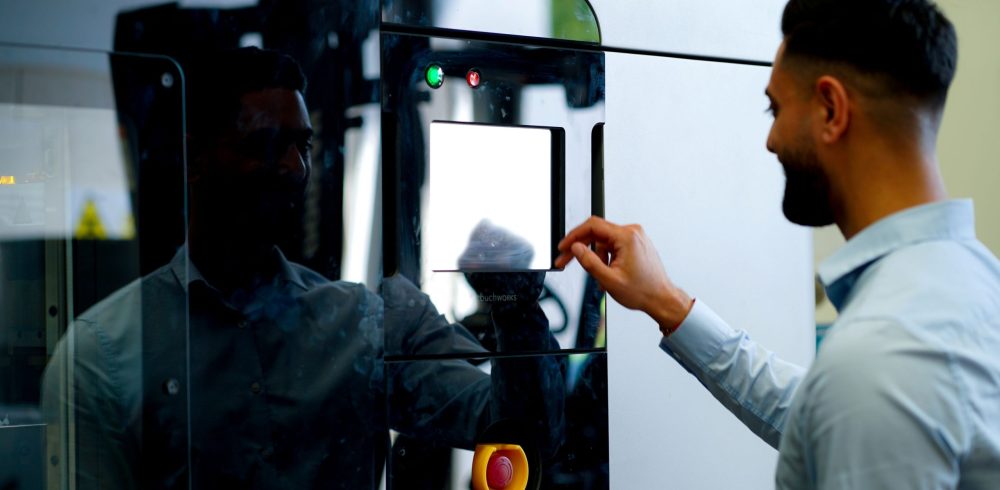According to Made Smarter, additive manufacturing (AM) benefits include “greater design freedom, lessened time to market or production, on-demand manufacturing, reduced inventory holding, and cuts to waste and costs of production”. For manufacturers that are integrating their first system into production and want to reap the benefits, there are many ways to ensure effective set up and improve additive production efficiency. Here Robert Pitts, sales manager at Tri-Tech 3D, UK provider of Stratasys 3D printing solutions, explores what these are.
For manufacturers that are fairly new to additive technology, especially sectors that were heavily reliant on machining and injection moulding, like oil and gas, it can be tempting to think of 3D printing as a one-size-fits-all solution. As a result, there can be an expectation that AM will be a like-for-like solution that delivers instant productivity benefits.
While 3D printing can produce parts faster, using less tools, space and workload than traditional methods, productivity and return on investment (ROI) will depend on how users apply this technology.
Laying the groundwork
Before installing an AM system, manufacturers must plan ahead to ensure that the machine will run at optimal performance. For example, the relative humidity (RH) of the air in the space where the machine and filament sit is critical. According to Eva-Dry, a dehumidifier supplier, manufacturers should keep humidity levels below 45 per cent RH to avoid issues occurring. If needed, manufacturers should install any humidifiers before bringing the system and filaments on-site to prevent frustrating quality issues that require rework, or issues with other electrical equipment.
Space is another consideration — weighing up a site’s physical constraints with the suitability of AM systems is a fine line to tread. Although the 3D printing market is now flooded with desktop low-cost hobbyist systems, many manufacturers are quickly finding that this technology can’t deliver parts on an industrial scale. Therefore, they must find a way to fit larger, industrial-grade systems on the factory floor without compromising on features and benefits.
Augmenting traditional processes
Fully integrating AM to replace injection moulding and other traditional techniques can be counterproductive. In most cases, additive complements subtractive processes, and combining the two can amplify production efficiencies while reducing costs associated with full-scale adoption.
A good example is the production of holding and metal-forming tools or checking fixtures. When I worked at Airbus, we were early adopters of additive technology, and we used it to build more complex designs. However, if the required parts are not overly complex, it can be more efficient for manufacturers to retain conventional machining methods.
Once the system is in full use, it’s important to ensure operators are using it effectively. It’s entirely possible that manufacturers may not be using their new system to its full potential, or that the machine has reached its limitations because the manufacturer’s requirements are greater than expected. For example, a PolyJet system can produce accurate, smooth prototypes and tooling, but if the manufacturer needs to produce large quantities of single production part designs with industrial-grade quality, selection absorption fusion (SAF) technology would be better suited.
Invest in scalability
It’s natural for manufacturers to be cautious and to go for a smaller system when starting their AM journey, but this can be counterproductive. Yes, upfront costs are lower, but so is the capacity ceiling and the limits on the amount of additive work that manufacturers can realistically take on.
We always recommend that manufacturers create a roadmap that shows where they are now, where they want to be in, say, six months or a year, and how they can get there. This can help them understand if they need to purchase one, two or even three systems, and what AM technologies they’ll need. Working with an experienced 3D printing partner can support this process and ensure that manufacturers are buying a system that follows their long-term additive production plan.
With AM offering so much, including design freedom and on-demand manufacturing, users must get the most out of their investment. This requires careful planning on how the technology will fit into the facility, and determining whether the specified system can deliver on long-term needs.
To find out how you can select the right 3D printing system and optimise production on your factory floor, visit www.tritech3d.co.uk/contact
Manufacturing & Engineering Magazine | The Home of Manufacturing Industry News















